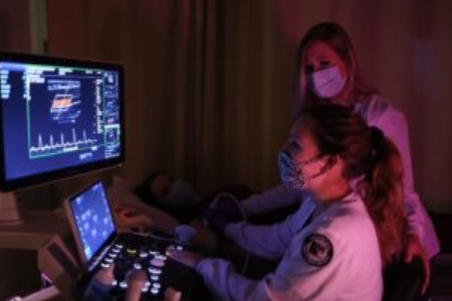Every October, leading associations such as the American Institute of Ultrasound in Medicine (AIUM), American Registry for Diagnostic Medical Sonography (ARDMS), American Society of Echocardiography (ASE), Cardiovascular Credentialing International (CCI), Society of Diagnostic Medical Sonography (SDMS), and Society for Vascular Ultrasound (SVU), partner together to generate awareness of the vital role diagnostic medical sonographers play in healthcare. In honor of Medical Ultrasound Awareness Month (MUAM), we wanted to take some time to highlight one of Mindray’s incredible partners, Weatherford College, and their dedicated teachers and students who are working tirelessly to make an impact in the sonography industry and beyond.
Every day, sonographers embody the passion and compassion needed to make a positive impact in the lives of their patients. They are keen learners who dedicate their lives to their trade. Top sonographers can successfully juggle being impeccably thorough and detail-orientated during exams while also ensuring patients feel heard, safe, and at ease. Sonographers continuously go above and beyond the call of duty and are a key player in the continuum of care.
Our ongoing partnership with Weatherford College’s diagnostic medical sonography program provided the perfect opportunity to highlight the incredibly hard-working sonographers and educators who spend years training and provide outstanding patient care in an industry that is rapidly growing to meet patient demand and evolving technologies.
Since the inception of Weatherford College’s diagnostic medical sonography program in 2009, the program has been continually growing in both size and overall ranking. In July 2021, Nursing Process1 named Weatherford College’s diagnostic medical sonography program the “best ultrasound technologist school in Texas”2. The rankings were based on acceptance rate, graduation rate, faculty credentials, school reputation, affordability, and other factors. With the need for sonographers on the rise, this is a tremendous distinction for Weatherford College. The U.S. Bureau of Labor Statistics projects that diagnostic medical sonographer jobs are expected to increase by 17% in the next decade3.
Mindray has partnered with Weatherford College since 2017, helping them train the next generation of sonographers with the latest cutting-edge ultrasound technology. Because of this partnership, Mindray was able to get a behind-the-scenes look at the program and its success! Our Marketing team members Michelle Carter, Courtney Gotelli, and Aleah Schweizer conducted a virtual round table with three of Weatherford College’s Sonography Faculty members to learn more about them and their goals, highlight their accomplishments, and hear about everything it has taken to get where they are today. In this interview, you’ll get insights from:
- Kelly Staub, MS, RDMS, RVT, RT (R), Interim Director of Imaging, Sonography & Radiologic Technology
- Dr. Peter Klimo, RDMS, RDCS, RVT, Interim Assistant Program Director, Sonography
- Tessa Gray, MS, RDMS, RVT, Clinical Coordinator, Sonography
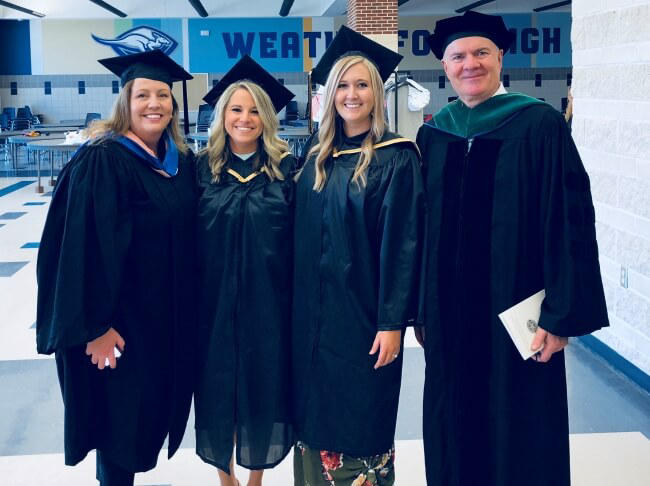
Tell us about the background and history of the Weatherford Sonography Program?
Kelly: The program graduated its first class in 2011 and was awarded CAAHEP accreditation in January 2012. It was one of very few ultrasound programs in Texas at that time. The program is accredited in abdomen, OB/GYN, and vascular tracts. Earlier this year, we went through our third site visit and had a perfect report. We were really excited to see all of our hard work pay off.
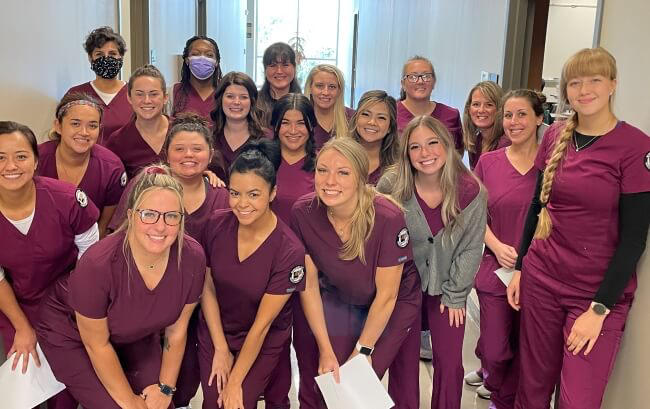
Where do your students typically land after graduating?
Tessa: The majority of our students have accepted a position prior to graduating through a clinical site they have rotated through during the program. Our clinical sites include hospitals and outpatient centers. Some students want to expand their skills and knowledge more and enroll in our echocardiography program. This makes them even more valuable in the field.
How would you describe most of your student’s backgrounds?
Kelly: One of my favorite things is getting to know our students. We accept students from all walks of life. Many students have previously received their undergraduate degrees, but we also accept students who have not yet completed any degree. We have accepted students who were physicians in other countries, architects, vet techs, teachers, etc.
What brought you into the sonography field and how did you get into teaching and education?
Dr. Klimo: That’s a story from a long time ago. I was a physician in Hungary, and after medical school, I started in Radiology. That was my first love, imaging. Then I came to the United States; I wanted to become a Radiologist. That didn’t happen for a couple of reasons, but I ended up in ultrasound, and I loved it from day one. Initially, I worked as a Sonographer in Los Angeles, and one day a gentleman came to the X-ray department, and he was talking to the chief X-ray tech and wanted to get him to come over to his school to teach.
This gentleman had an X-ray school, and he wanted to start ultrasounds. The guy sent him over to me, and that’s how I got into teaching ultrasound. Over the years, I’ve been in all the specialties when I was working. I did some mobile service back in Los Angeles. I tried everything except being an application specialist – that I haven’t tried. I’m in my 20th year of teaching now. I did ten years back at the first college I was talking about, then I taught at a couple of other colleges. This will be my fifth year at Weatherford.
Tessa: Both Kelly and I have come full circle. I was an education major when I first began college, but after shadowing an elementary school teacher, I wasn’t sure if being in that role on a daily basis was for me, so I began to look into ultrasound. I knew that working with kids and teaching were still a part of me; I just didn’t know how exactly that looked. After becoming a sonographer, I applied at a children’s hospital in Fort Worth, Cook Children’s Medical Center. I worked there for five years until Kelly approached me about a teaching position at Weatherford College. Although I was hesitant to leave a job I loved, I decided to combine my love of sonography and teaching, which has brought me to where I am today. I’m very happy with my decision; teaching sonography has been an extremely rewarding career.
Kelly: I also started out like Tessa, taking college classes to become an elementary educator. My dream job was being a third-grade teacher, but after substituting, I knew I wanted to do something different. My OB/GYN, Dr. Robbins, was influential in my entering the medical field. I graduated from Weatherford College in 2007 as a radiologic technologist and cross-trained into ultrasound under a radiologist in 2009. One of my past instructors approached me in 2016 about a position at the college in the sonography program. After accepting the position, I somehow convinced Tessa to join me! We started in 2016 with only our associate degrees, but through years of hard work, we both just graduated in May with our Master of Science in Health Studies with an Emphasis in Higher Education from Texas Woman’s University.
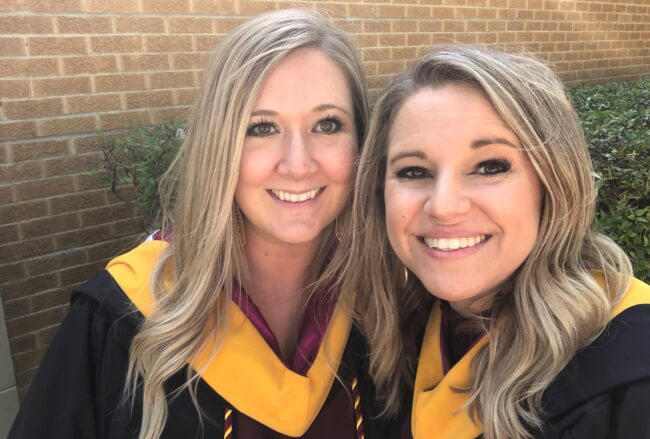
What does the sonography program and the curriculum look like?
Kelly: We combine clinicals and classes throughout the five semesters of the program. As first-year students, they learn physics in order to take their SPI registry, normal anatomy of the abdomen, small parts, and obstetrics and gynecology. As second year students, they focus more on vascular and dive into the pathology of the abdomen.
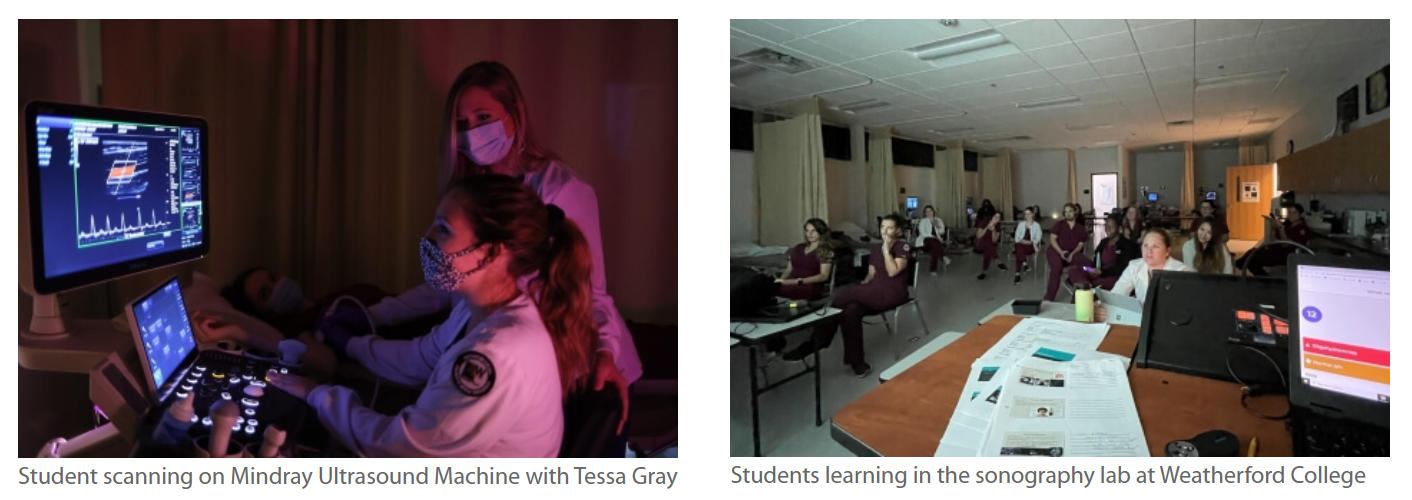
Do most colleges have students take all three registries, or is that unique to Weatherford?
Kelly: I believe that our students set themselves apart by taking all three registries – the majority succeed in this before graduation. As a college, we encourage them to do this, but it is each student’s individual choice. We equip them with the knowledge they need to be successful, but the discipline and determination it takes to pass all three extremely difficult registries prior to graduation (in 60 days) is a testament to their hard work.
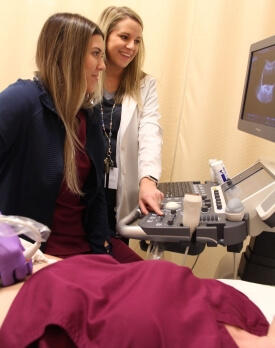
What are you most proud of with the sonography program?
Kelly: I would say our pass rates make me the proudest. Since Dr. Klimo, Tessa, and I have been on staff, 62 students have graduated. Fifty-eight are triple registered and three are double registered. Our job placement rate is currently at 98%, which we are also very proud of.
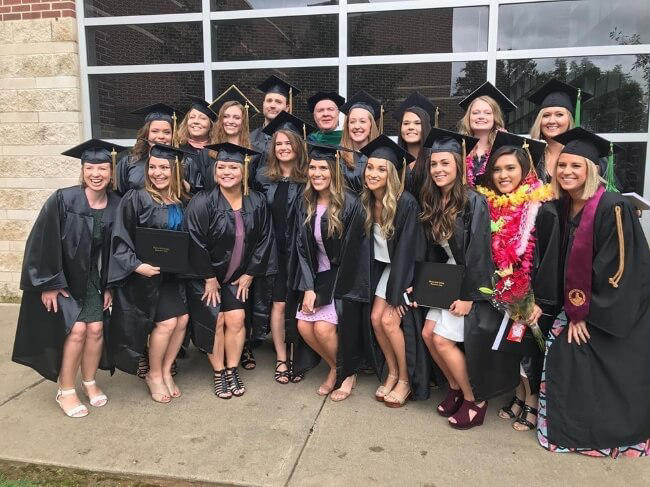
Do you find that most of your students gravitate towards one specialty?
Tessa: There are a few students who gravitate towards OB/GYN or vascular, but the majority of students choose to work at a facility where they are able to scan abdomen, vascular, OB, and gynecology.
What is your vision for the echo program?
Dr. Klimo: We are working with the dean to put together a proposal to have a daytime cardiac and vascular program together. We don’t have specifics yet. It depends on how many clinical sites we can sign up, and it would be pretty much 10, 15, 20 students. As I said, it depends on how many clinical affiliates we can line up. That’s the future. There is a need, the community, our community, and everywhere else. I think they need a lot of cardiac sonographers because there’s a tremendous need for those studies.
What sets your program apart from other sonography programs?
Tessa: The majority of our students are passing three registries within 60 days, which is a huge feat. That, combined with our job placement rates, helps our program stand out.
Kelly: The clinical sites speak very, very highly of our students, which helps them get jobs. Employers have told us that they know they’re good when they see “Weatherford College” on an application. We definitely have good relationships with our clinical affiliates – we are very thankful for them.
Dr. Klimo: I think two aspects might be different and a little bit better for the students. One is that we have a lot of scheduled hours in the lab. The course content is really focused on practical, as well as getting them to pass the exam. Let’s talk about the practical. They have a lot of open labs where they can bring their family and friends, and they did. Everybody likes that they can bring in their spouse, kids, or whoever they feel would benefit from the scanning. They get a lot of practical experience, and then the didactic content is such that they also learn everything they need for the exam. What happened two years ago – we had six students, six graduates, one didn’t want to be in ultrasound, four of the five ended up getting a job as a cardiac sonographer. Every one of them passed the registry exam, the ARDMS exam. That tells you that we really have a good program.
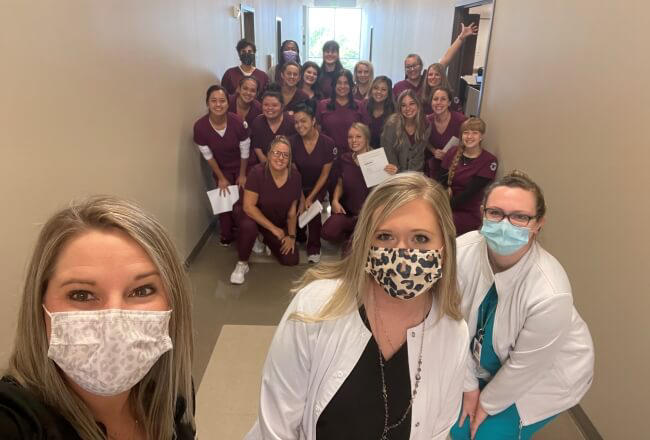
How does the sonography program give back to the community?
Tessa: In these students’ fourth semester, we require them to turn in two professional credits as part of their clinical grade. With that, they do volunteer work and show proof of at least two different things that they did throughout the semester that gave back to the community. Many of the students donate clothes to Goodwill, food to the Coyote Closet on campus, or donate blood during blood drives held at the college. Last year, the entire class chose to pick out an angel from the Angel Tree and then bought presents for that child for Christmas.
Kelly: Another thing our college does is provide free 2D scans to OB patients, as long as they are under an OB physician’s care. When the OB volunteer is between 28-32 weeks, we offer low-cost 3D/4D images. Our students have also participated in suicide prevention training and are currently organizing something for a battered women’s shelter.
Dr. Klimo: The plan for the future with the echo program would be to have a portable unit that we could go out to, either churches, schools, or some other events where we could do some scanning, screening of stroke risk, and things like that for the community.
How many ultrasound systems does the college currently have?
Dr. Klimo: We have four Mindray ultrasound systems – two DC-8s and two DC-90s. And then I was told by the dean recently that we might be able to acquire another one next year. I have no reason to think it would not be a Mindray because I like the features and the warranty.
What made Mindray stand out when Weatherford College was looking to purchase new ultrasound machines?
Dr. Klimo: Yes. Let me say a few words about it. I think it was the 2017 Dallas Conference of the SDMS, and I dropped by at the booth. I think Michelle (Mindray Clinical Marketing Manager) and Sara (Senior Sales Representative) were there. Then, it started from there. Sara contacted me later, and we set up a demo, and it just started to roll. She was very responsive – Mindray was the first vendor who reached back out after the show. She’s very quick. I like that. I like the approach – you go after your potential clients and explain to them what you have. That’s why it started. I think we’re going to have more Mindray units. When we look, Mindray is now top of our list.
When demoing the systems, was there anything either about the system or Mindray that stood out?
Dr. Klimo: I did have a couple of other vendors come and do some demos. I don’t remember all of them, but Mindray was the only vendor willing to work with us and come within the price range available in our budget. That was the first big step. The next one that, I think, some of your competitors are trying to emulate now is the five-year warranty. The fact that Mindray was willing to work with our budget and then the five-year warranty, I think those two aspects sold it.
Now that I think about it, the cardiac side of using it, it’s really excellent image quality. At that time, we had only, I believe, the DC-8 or something, the first two versions, not the 9. The students really liked it. It’s very easy to use. Ease of use is essential for the students. At the time I was the program director, it was crucial that the units did everything, abdomen, small parts, OB, vascular, and 3D. It has everything that we need.
How has Mindray equipment helped advance the Weatherford sonography program?
Dr. Klimo: I think the feedback has been that our students are better prepared than graduates of other colleges. I think Mindray, its quality, and having four of the systems, I think it had a role in it. I cannot put numbers on it, but I truly believe that it affected their skills because they are very easy to use, the images are great, and it’s very versatile.
Kelly: Mindray has helped advance our sonography program by allowing our students to work with the most recent technology. From the available machines in our lab, the Mindray machines are always the first choice.
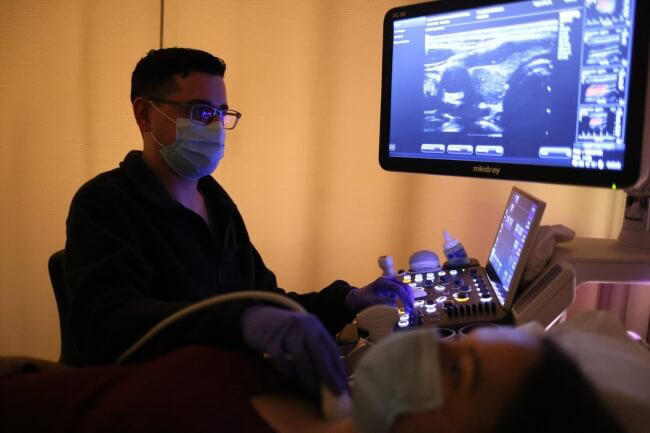
Disclaimers:
All images have been provided by Weatherford College.
This interview has been condensed to fit this blog.
